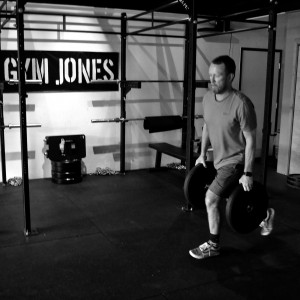Training vs. Exercise
 This post is the next in an educational series behind the science and methodology of the “why” of what we do at The Ripple Effect (RE). See links below to previous content if you’d like to read or review.
This post is the next in an educational series behind the science and methodology of the “why” of what we do at The Ripple Effect (RE). See links below to previous content if you’d like to read or review.
“Aligning the Modern Athlete”
“The Science of Strength”
Exercise is Exercise.
Training is Both.
I’ll elaborate…
Exercise:
Definition – activity requiring physical effort, carried out to sustain or improve health and fitness.
Likely we have all heard or read somewhere what healthy amounts of exercise are for the average adult American. Thirty minutes of aerobic activity four to six days per week, and at least two days per week of weight lifting; weight lifting(/strength training) becoming more and more important over the age of 40, and increasingly so with each decade.
Many, if not most, people in the Roaring Fork Valley get plenty of “exercise”. We bike, run, ski, climb, boat, the list of activities and sports goes on and includes many other outdoor and/or mountain activities.
Training:
Definition –
The physical and mental conditioning program used by athletes to increase their proficiency in sports. This applies from everything from Ultra Running Coaching to ski conditioning.
2. The practice of physical conditioning and reconditioning of athletes and prevention of injuries incurred by them.
At RE, our primary focus and purpose is:
To provide athletic training for mountain (or strength to weight ratio) athletes by supporting a progression toward proper alignment, retraining or eliminating negative movement patterns, and strengthening the entire kinetic chain for injury prevention – and ultimately sport performance.
For those of you familiar with the Ripple Effect and our philosophy, you can see we fall definitively into the “Training” category with our style of instruction, attention to detail, emphasis on movement analysis (link), and the science behind the method (link).
Aside from providing a positive environment, we keep instruction quality high and group size small, focusing on proper form, mobility, and alignment. We utilize the science of strength training to develop and inform our class programming, then additionally bringing in the concept of periodization to create a macro schedule of progression for all our athletes. This is training.
This process runs seasonally through a strength phase, followed by a power phase, then ending with a muscular endurance or power endurance phase. Most of our athletes are classically endurance athletes who need this type of structure and support. Even our climbers and boaters (who fall into a slightly different category of athlete) need this foundation to support their specific sports and seasons as well.
Nothing is random at the RE. Periodization is science.
To delve deeper into the concepts of periodization for endurance or mountain sports, read “Periodization: The theory and methodology of Training”, by Tudor O. Bompa, G Gregory Haff (5th ed.). The pioneer of periodization of training, Tudor Bompa created the base of science which we now stand on and from which I have honed my own practice of the method.
All classes at RE are programmed ahead of time to deliver the best possible product for our athletes, and modifications are made to support athletes who are recovering from injury, gaining functional mobility, or are new to the gym and learning movements. If you are looking for Ultra running coaching or ski conditioning to have your best season ever our private session personal training could be the key to your success.
Having spent decades training, coaching, performing, teaching and ultimately creating the best possible strength conditioning format for mountain athletes, I now have the unique honor and opportunity to mentor five women and pass this knowledge on to them. This often includes life knowledge, and I strive to do this gracefully, patiently, and yes in a determined fashion, with standards to be meet. This is the art of Training.
So why train versus just exercise?
Hopefully this educational article has shed a little more light on that question.